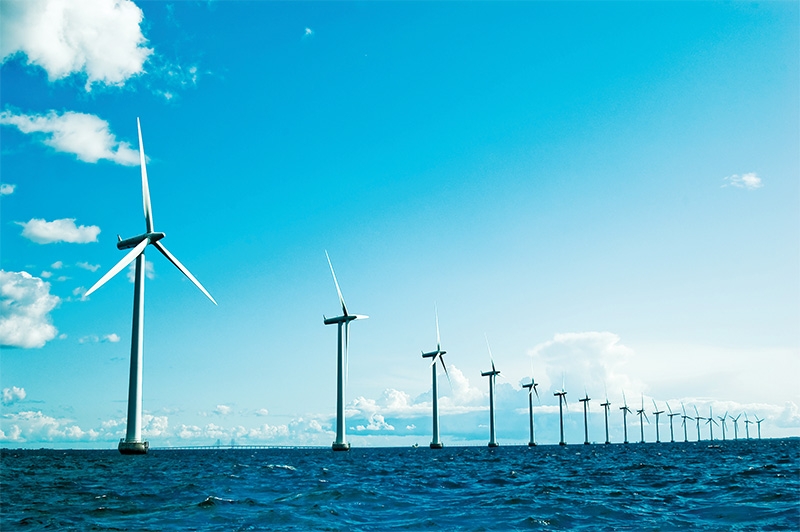GWEC urges Vietnam to extend wind energy scheme
The Global Wind Energy Council is calling on the Vietnamese government to extend wind tariffs and maintain regional leadership in clean energy investment. What are reasons behind this?
 |
| Liming Qiao, Asia director of the Global Wind Energy Council |
Wind can be a reliable resource to help meet Vietnam’s sourcing electricity demand. Due to the delayed construction of some of the coal fire power plants, the southern power system in Vietnam is likely to face some power shortages. Wind can play a big role in filling that gap.
Vietnam has great potential of wind resources both onshore and offshore, which can provide a reliable local energy supply. It also contributes to the country’s climate mitigation strategy, changing the course of the energy system from a high-emission one into a carbon-friendly one.
Cost reductions for wind turbine technology have been achieved globally. There is still huge cost reductions set for Vietnam in the future, but it will only happen if a more mature wind supply chain is to be established. And this means a boom-and-bust cycle needs to be avoided in wind development. The delayed decision of a feed-in tariff (FiT) extension will very likely create a burst for wind development in 2022-2023 after a boom next year, which won’t be a good thing for the industry and also for Vietnam to enjoy a much smoother curve of cost reduction.
We’ve already seen investors slow down or stop issuing new financial closure decisions and this is impacting the industry now. The effect will show in two years and we will see a dip in development by 2022-2023. This can be avoided if policymakers are aware of the industry’s characteristics and thus can ensure a more conducive environment for the sector in the country to develop.
Vietnam has drawn significant interest among international developers and financiers as a fast-growing market with much potential. But what are bottlenecks for them here?
A typical wind project will take between 18 months and two years to reach commercial operation date. And now investors don’t see a possibility of a new project reaching that date before November 2021, so it is hard for them to make an investment decision until a FiT extension decision is made.
 |
| GWEC urges Vietnam to extend wind energy scheme |
Despite COVID-19’s grim effects on many industries, orders for the global offshore wind industry increased dramatically in the first half of 2020. With technology still improving and tumbling electricity prices, how reliable can the wind sector become?
Offshore wind has proven to the world that it is technically reliable and economically feasible – cost reduction of offshore wind reached more than 40 per cent globally in the past 10 years.
Because of its scale of development and resources potential, along with its high technical reliability, wind very much provides a base-load type of energy source, which is very much different from the variable nature of other renewable energy sources.
Thus offshore wind, as a technology, can be perceived as a reliable and solid solution to the decarbonisation of the global energy system.
Vietnam has big potential, should grab the opportunity, and start development as soon as possible.
How are new technologies and trends increasing output and reducing costs for wind projects?
Lots of technological innovations have occurred. For example, longer blades and higher hub heights allow wind turbines to capture more wind resources and work in regions with less wind. Now it is possible to have turbines for wind speed of less than five metres per second. There are also better tools for sites and wind measurement that ensure optimisation for new wind farms.
Moreover, there are new materials for blades and bodies to make them lighter but at the same time stronger, as well as new coatings to make them more resistant to erosion and other weather-caused effects.
What the stars mean:
★ Poor ★ ★ Promising ★★★ Good ★★★★ Very good ★★★★★ Exceptional
Related Contents
Latest News
More News
- Ho Chi Minh City hits $8.37 billion in FDI (December 29, 2025 | 08:28)
- Tax sector wraps up 2025 and sets priorities for next year (December 25, 2025 | 14:00)
- Heavy industries set for pilot greenhouse gas quotas (December 25, 2025 | 10:00)
- $250 million deal targets women-owned SMEs, sustainable agriculture (December 22, 2025 | 17:40)
- UOB sees Vietnam growth easing in fourth quarter (December 22, 2025 | 17:39)
- Government moves to establish International Financial Centre (December 21, 2025 | 21:00)
- Vietnam's IFC to target global investment flows (December 21, 2025 | 18:00)
- Ha Tinh breaks ground on major Vingroup industrial and energy projects (December 19, 2025 | 18:24)
- EVN launches major power infrastructure projects nationwide (December 19, 2025 | 18:17)
- VAL inaugurates second production line to meet domestic animal feed demand (December 19, 2025 | 16:37)

 Tag:
Tag:





















 Mobile Version
Mobile Version